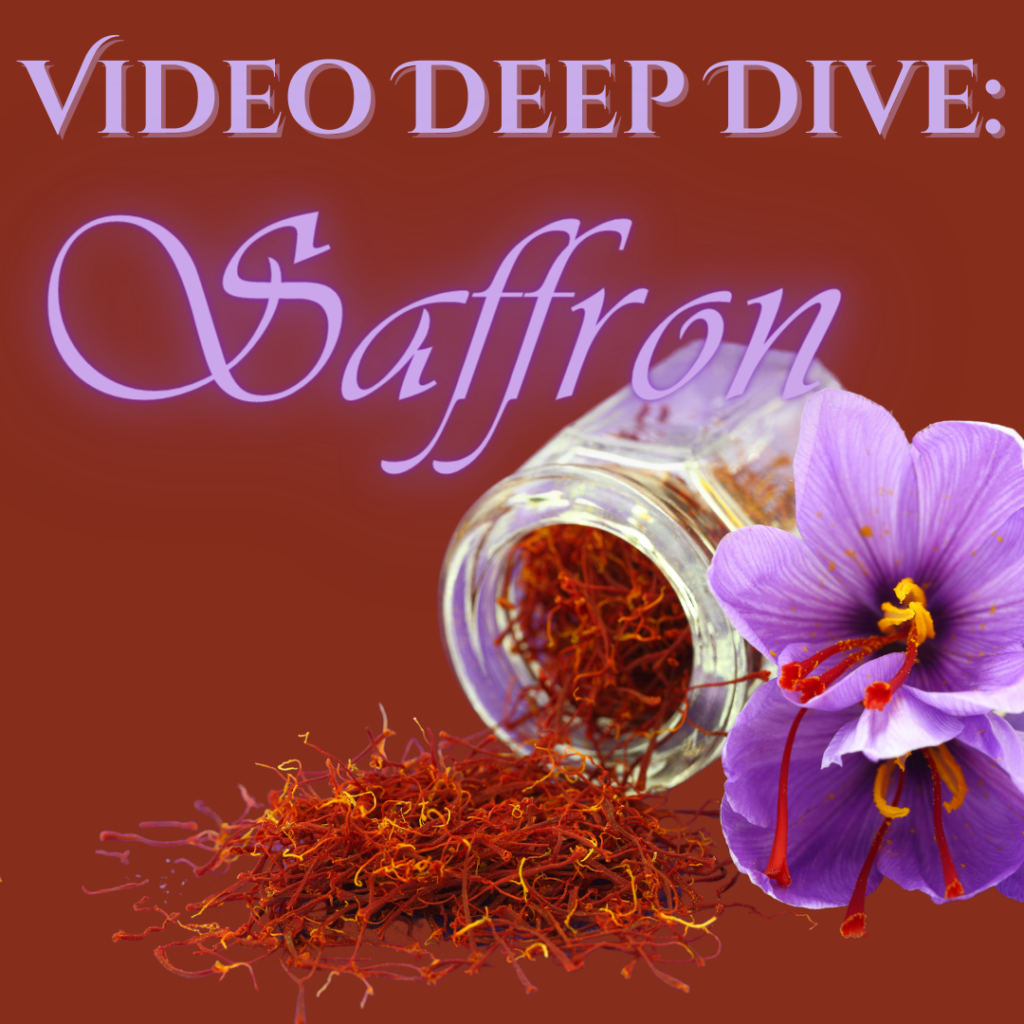
As it happens, I’m a nerd. Not only am I a writer, I also read, draw, and film videos. Sometimes when I’m doing research for a YouTube video, I end up going on a deep dive, delving into a rabbit hole that ends up weighing heavily on my noggin.
When I filmed Chapter 14: Happy Birthday, Laria! I learned about an ingredient that played a small part in the recipe but left a huge impression.
This blog is dedicated to the coveted spice saffron.
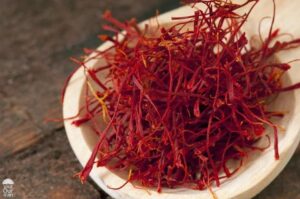
If you haven’t heard of the spice native to Asia Minor, the Mediterranean, and Iran, it’s actually the stigmas of the crocus sativus. Yes, it’s the female bits of the flower. It’s also cultivated in Spain, France, and Italy. Historically, it’s been used in medicines, perfumes, dyes, and flavoring dating back to ancient Greek and Romans.
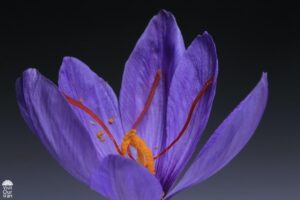
There are several healthy benefits of saffron, which is a deep dive in itself. The main components crocin, safranal, and picrococin have the following beneficial properties:
- Anti-inflammatory, anti-depressant, and memory-improving qualities. Studies have investigated the effects of crocin on Parkinson’s and epilepsy.
- Anti-oxidant, anti-convulsant, and anti-anxiety effects in studies with safranal.
- Cancer treatment, diabetes, and sexual dysfunction.

Well, sign me up! But what does it taste like?
Saffron has a pungent, earthy flavor. If it’s authentic, the taste will be slightly bitter and smell like hay and honey.
The caveat? It’s $$$ Why? I’ll tell you.
Harvesting saffron is extremely labor intensive. The stigmas must be harvested by hand at a certain time of day so as not to dry out or damage the plant. The flower only blooms for a period of 6 weeks. Each flower has three stigmas. It takes thousands of flowers to create a pound of saffron, anywhere from 75,000 to 170,000 depending on the source. So, yeah. That translates to a high price, especially depending on the quality. Iran is the largest producer of high quality saffron, more than 90%.
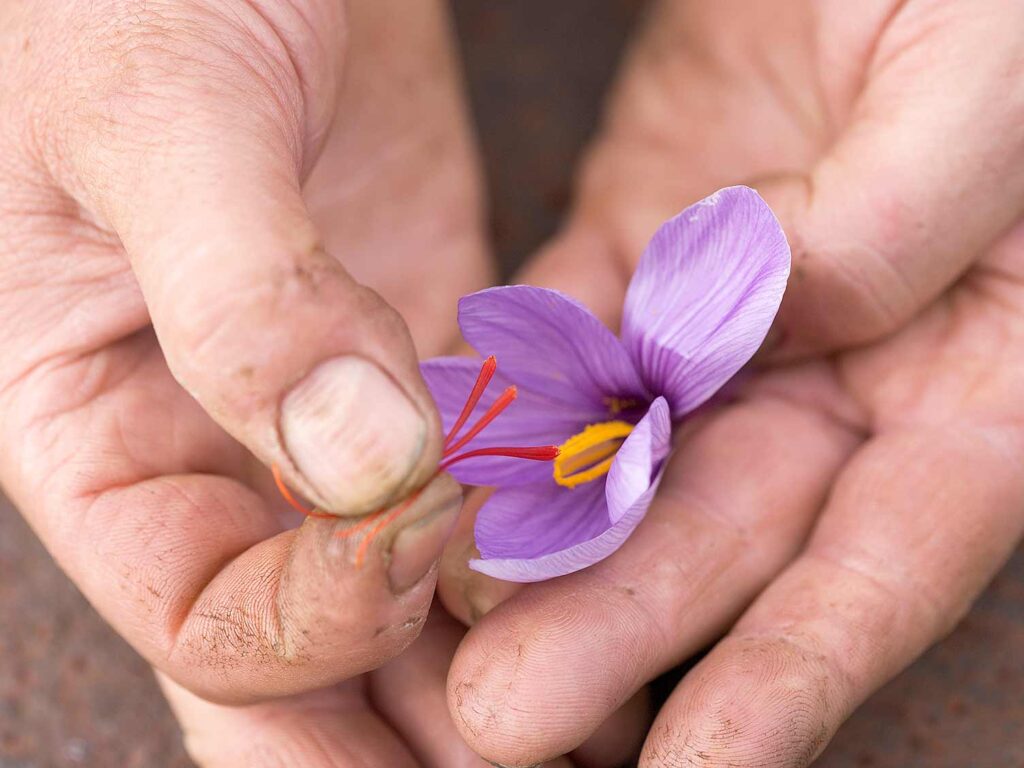
Saffron can be found in ground or thread form, but threads are best for preserving flavor and aroma. This is also a purer form and easier to assess for quality. There are four types, which are determined by where the stigmas are cut. In order of desirability:
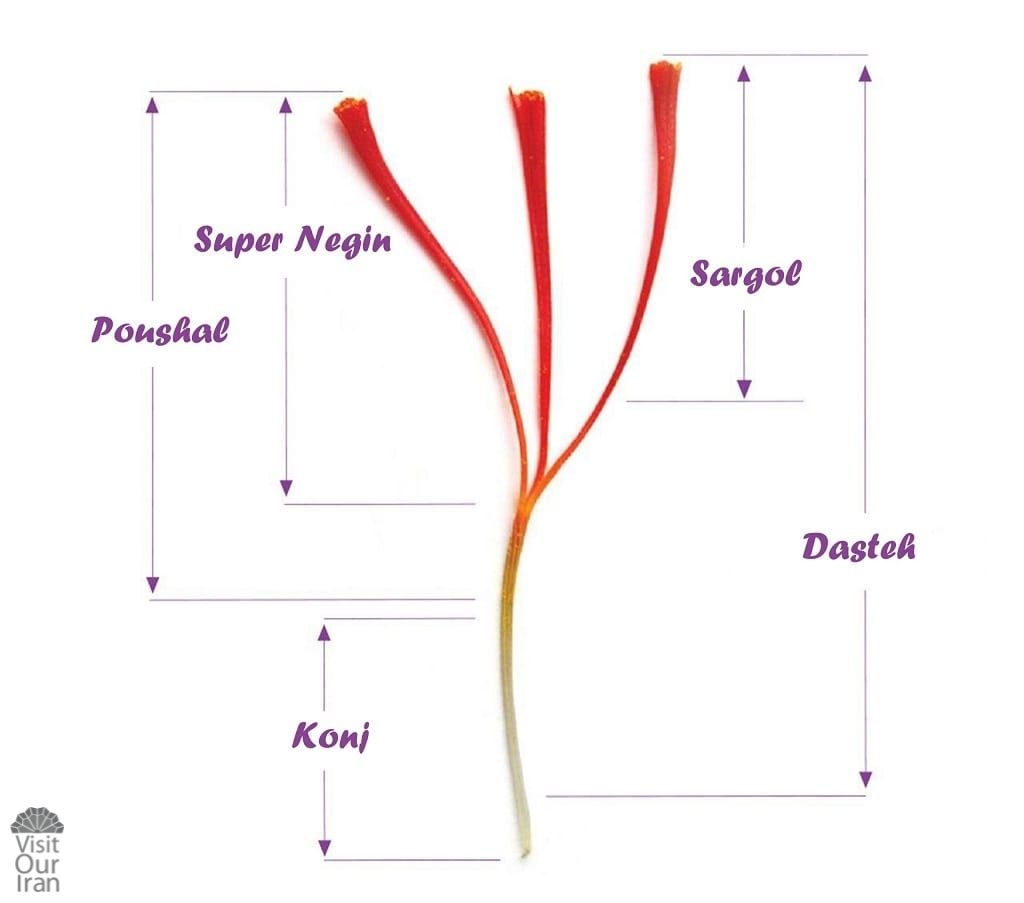
Sargol: the red tips of the stigma. This is the best type for color and aroma. It contains the highest amount of beneficial components.
Negin: cut right at the end where the stigma separates into three parts.
Poshal: contains the yellow part of the stigma. Not as pure.
Dasteh: contains all the parts of the stigma.
So, when you’re watching me make a custard with a pinch of this delectable Iranian delicacy, remember what this spice had to go through to get into my mouth.
Now what do I do with it?
Sources: